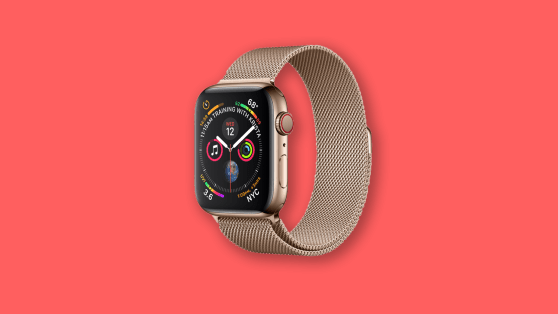Tuesday, 31 December 2019
Fox News Breaking News Alert
Up to 4,000 US troops could deploy to Middle East amid Baghdad unrest, officials say
12/31/19 3:17 PM
New story in Technology from Time: President Trump Has Signed a Law to Reduce Robocalls. What Does It Mean For Your Phone?
(NEW YORK) — An anti-robocalls measure signed into law Monday by President Donald Trump should help reduce the torrent of unwanted calls promising lower interest rates or pretending to be the IRS, though it won’t make all such calls disappear.
The new law gives authorities more enforcement powers and could speed up measures the industry is already taking to identify robocalls. And when phone companies block robocalls, they must do so without charging consumers. This should help Americans dodge many of these annoying calls.
“American families deserve control over their communications, and this legislation will update our laws and regulations to stiffen penalties, increase transparency, and enhance government collaboration to stop unwanted solicitation,” White House press secretary Stephanie Grisham said.
The law is a “big victory,” said Consumer Reports’ Maureen Mahoney. “The key is requiring these phone companies to help stop the calls before they reach the consumer and do it at no additional charge.”
The robocall problem has exploded because cheap software makes it easy to make mass calls. Americans collectively get billions of robocalls each month. Such calls have disrupted operations at hospitals by diverting staff time to deal with calls faked to look as though they are coming from inside the hospital. Scams conducted through such calls have also defrauded people out of millions of dollars. Many people now avoid answering calls altogether if they come from unknown numbers.
Under federal law, it’s already illegal to fake numbers on Caller ID to defraud or cause harm. Scams are also prohibited, as are automated telemarketing calls from legitimate companies that don’t already have written permission. YouMail’s robocall index says that half of all robocalls today are fraudulent.
But enforcement has been tough. Federal agencies have fined scammers hundreds of millions of dollars, but it’s been difficult to collect. Many of the callers are overseas. It’s hard to throw the fraudsters in jail.
The new law builds on steps taken by the country’s communications regulator, the Federal Communications Commission, as well as state attorneys general and industry groups.
The FCC has clarified that phone companies can block unwanted calls without first asking customers, paving the way to broaden the rollout of call-blocking services. The law says phone companies cannot charge for these services.
Another important step is getting rid of “spoofed” numbers, or when a scammer fakes Caller ID to look like it’s coming from the same area code or an important government agency like the IRS. The industry is developing a system to tell people when the Caller ID number is real.
The new law requires all phone companies to put this system in place, which Mahoney said will mean phone companies have to try to stop these calls before they reach the consumer. This technology doesn’t work for home phones connected to an old-school copper landline; the law calls on the FCC and phone companies to come up with an alternative for those customers.
The FCC also gets more time to fine robocallers and do so without warning them first. The bill also calls for tougher fines when individuals intentionally violate the law and pushes the agency to work with the Justice Department to go after criminals. Over the long term, that could act as a deterrent.
Nonetheless, determined scammers and telemarketers will likely find ways to get through, given the availability of cheap dialing technology and the big potential payoff from victims. Think of how malware on personal computers is still a problem despite antivirus software. Automated callers could circumvent new safety measures by buying or hijacking real numbers to make calls.
“They’ll always find ways around this,” said Paul Florack, vice president of product management for Transaction Network Services, which runs robocall analytics for Verizon, Sprint and other phone companies.
And not every robocall is considered illegal. Some robocalls are helpful reminders from pharmacies that a prescription is ready, or schools advising a snow day. If you’ve given written permission, a cable company or cruise line can pitch you with marketing calls that consist of prerecorded messages. While a House version of the measure would have made it harder for legitimate companies to make such calls, that measure was dropped in the version that became law.
The law also does nothing about telemarketing calls that aren’t automated. A human can still pester you unless you sign up for the Do Not Call registry, which scammers often ignore anyway.
And even when phone companies have in place the system for verifying Caller ID, not all phones support it. A year ago, T-Mobile started telling customers if the number ringing them was “verified,” but it can’t do that on Apple’s iPhones until after the call has ended. That’s because Apple software doesn’t allow it, Florack said. Apple didn’t reply to a request for comment.
The law says phone companies can’t charge extra for blocking robocalls, though it doesn’t require that such services or apps be made available to everyone. AT&T’s version, for instance, isn’t rolled out yet to its 18 million customers on lower-income-skewing prepaid plans.
But ideally, Mahoney said, a consumer wouldn’t have to take any action by downloading an app — as the carrier would be able to block calls automatically.
Fox News Breaking News Alert
Trump blames Iran for US Embassy attack in Iraq, vows to hold regime ‘fully responsible’
12/31/19 4:32 AM
Fox News Breaking News Alert
Dozens break into US Embassy compound in Baghdad, AP reports
12/31/19 2:12 AM
Fox News Breaking News Alert
Crowd attempts to storm US Embassy in Baghdad, report says
12/31/19 1:20 AM
Monday, 30 December 2019
Fox News Breaking News Alert
Suspect in anti-Semitic attack at New York rabbi’s home charged with federal hate crimes
12/30/19 9:50 AM
New story in Technology from Time: 20 Years Later, the Y2K Bug Seems Like a Joke—Because Those Behind the Scenes Took It Seriously
In the final hours of Dec. 31, 1999, John Koskinen boarded an airplane bound for New York City. He was accompanied by a handful of reporters but few other passengers, among them a tuxedo-clad reveler who was troubled to learn that, going by the Greenwich Mean Time clock used by airlines, he too would enter the 20th century in the air.
Koskinen, however, had timed his flight that way on purpose. He was President Bill Clinton’s Y2K “czar,” and he flew that night to prove to a jittery public — and scrutinizing press— that after an extensive, multi-year effort, the country was ready for the new millennium.
The term Y2K had become shorthand for a problem stemming from the clash of the upcoming Year 2000 and the two-digit year format utilized by early coders to minimize use of computer memory, then an expensive commodity. If computers interpreted the “00” in 2000 as 1900, this could mean headaches ranging from wildly erroneous mortgage calculations to, some speculated, large-scale blackouts and infrastructure damage.
It was an issue that everyone was talking about 20 years ago, but few truly understood. “The vast majority of people have absolutely no clue how computers work. So when someone comes along and says look we have a problem…[involving] a two-digit year rather than a four-digit year, their eyes start to glaze over,” says Peter de Jeger, host of the podcast “Y2K: An Autobiography.”
Yet it was hardly a new concern — technology professionals had been discussing it for years, long before Y2K entered the popular vernacular.
President Clinton had exhorted the government in mid-1998 to “put our own house in order,” and large businesses — spurred by their own testing — responded in kind, racking up an estimated expenditure of $100 billion in the United States alone. Their preparations encompassed extensive coordination on a national and local level, as well as on a global scale, with other digitally reliant nations examining their own systems.
It was as years of behind-the-scenes work culminated that public awareness peaked. Amid the uncertainty, some Americans stocked up on food, water and guns in anticipation of a computer-induced apocalypse. Ominous news reports warned of possible chaos if critical systems failed, but, behind the scenes, those tasked with avoiding the problem were — correctly — confident the new year’s beginning would not bring disaster.
“The Y2K crisis didn’t happen precisely because people started preparing for it over a decade in advance. And the general public who was busy stocking up on supplies and stuff just didn’t have a sense that the programmers were on the job,” says Paul Saffo, a futurist and adjunct professor at Stanford University.
But even among corporations that were sure in their preparations, there was sufficient doubt to hold off on declaring victory prematurely. The former IT director of a grocery chain recalls executives’ reticence to publicize their efforts for fear of embarrassing headlines about nationwide cash register outages. As Saffo notes, “better to be an anonymous success than a public failure.”
Get your history fix in one place: sign up for the weekly TIME History newsletter
After the collective sigh of relief in the first few days of January 2000, however, Y2K morphed into a punch line, as relief gave way to derision — as is so often the case when warnings appear unnecessary after they are heeded. It was called a big hoax; the effort to fix it a waste of time.
But what if no one had taken steps address the matter? Isolated incidents that illustrate the potential for adverse consequences — albeit of varying degrees of severity — ranging from a comically absurd century’s worth of late fees at a video rental store to a malfunction at a nuclear plant in Tennessee. “We had a problem. For the most part, we fixed it. The notion that nothing happened is somewhat ludicrous,” says de Jager, who was criticized for delivering dire early warnings.
“Industries and companies don’t spend $100 billion dollars or devote these personnel resources to a problem they think is not serious,” Koskinen says, looking back two decades later. “…[T]he people who knew best were the ones who were working the hardest and spending the most.”
The innumerable programmers who devoted months and years to implementing fixes received scant recognition. (One programmer recalls the reward for a five-year project at his company: lunch and a pen.) It was a tedious, unglamorous effort, hardly the stuff of heroic narratives — nor conducive to an outpouring of public gratitude, even though some of the fixes put in place in 1999 are still used today to keep the world’s computer systems running smoothly.
“There was no incentive for everybody to say, ‘we should put up a monument to the anonymous COBOL [common business language] programmer who changed two lines of code in the software at your bank.’ Because this was solved by many people in small ways,” says Saffo.
The inherent conundrum of the Y2K debate is that those on both ends of the spectrum — from naysayers to doomsayers — can claim that the outcome proved their predictions correct.
Koskinen and others in the know felt a high degree of confidence 20 years ago, but only because they were aware of the steps that had been taken — an awareness that, decades later, can still lend a bit more gravity to the idea of Y2K. “If nobody had done anything,” he says, “I wouldn’t have taken the flight.”
Fox News Breaking News Alert
PICTURED: See the hero ex-FBI agent who stopped the Texas church gunman
12/30/19 8:17 AM
Fox News Breaking News Alert
New York Giants fire head coach Pat Shurmur after disappointing season: reports
12/30/19 6:17 AM
New story in Technology from Time: Sharon Stone Says Dating App Bumble Thought Her Profile Was Fake and Blocked Her
Hollywood actress Sharon Stone got blocked on Bumble after several users complained that her profile was fake, prompting the “Basic Instinct” star to reach out to the match-making app on Twitter to say that she is the real deal.
Bumble has yet to reply on Twitter.
I went on the @bumble dating sight and they closed my account. 👁👁
Some users reported that it couldn’t possibly be me!
Hey @bumble, is being me exclusionary ? 🤷🏼♀️
Don’t shut me out of the hive 🐝— Sharon Stone (@sharonstone) December 30, 2019
— Sharon Stone (@sharonstone) December 30, 2019
Stone’s travails highlight the push taken by Bumble and other matchmaking apps to weed out fake dating profiles. Dating apps have come under more scrutiny this year with the U.S. Federal Trade Commission suing Tinder owner Match Group Inc. for deceiving consumers by using messages from fraudulent accounts to encourage them to sign up for subscriptions.
Rimberg International Corp., which owns Bumble along with gay-dating app Chappy and London-based Badoo, would want to keep it clean. It was weighing an initial public offering in the U.S. as part of its plan to become the world’s biggest dating business, founder Andrey Andreev told Bloomberg News in an interview last year.
Sunday, 29 December 2019
Fox News Breaking News Alert
Rep. John Lewis, longtime congressman and civil rights leader, diagnosed with stage 4 pancreatic cancer
12/29/19 3:15 PM
Fox News Breaking News Alert
NYC Mayor de Blasio joins Ed Henry on 'America's News HQ' for exclusive interview
12/29/19 9:30 AM
Fox News Breaking News Alert
Suspect in stabbing at NY rabbi's home arrested on attempted murder, byrglary charges
12/29/19 7:41 AM
Saturday, 28 December 2019
Fox News Breaking News Alert
New York synagogue stabbing attack results in several injuries: reports
12/28/19 7:52 PM
Fox News Breaking News Alert
Plane with 6 people on board crashes in Lafayette, La.
12/28/19 8:13 AM
Friday, 27 December 2019
Fox News Breaking News Alert
Wreckage of Hawaii tour helicopter carrying 7 has been found, search continues for survivors, officials say
12/27/19 2:23 PM
Thursday, 26 December 2019
New story in Technology from Time: China Says It Will Complete Its Competitor to GPS in the First Half of Next Year
BEIJING (AP) — China said Friday its Beidou Navigation Satellite System that emulates the U.S. Global Positioning System will be competed with the launch of its final two satellites in the first half of next year.
Project director Ran Chengqi told reporters that the core of the positioning system was completed this month with the launch additional satellites bringing its total constellation to 24.
That was up from 19 the year before, making it one of rising space power China’s most complex projects.
Ran described the system at a rare news conference as having “high performance indicators, new technology systems, high localization, mass production networking and a wide range of users.”
“Before June 2020, we plan to launch two more satellites into geostationary orbit and the Beidou-3 system will be fully completed,” Ran said.
The latest launches mark the third iteration of Beidou, meaning “Big Dipper,” the first of which was decommissioned in 2012. Future plans call for a smarter, more accessible and more integrated system with Beidou at its core, to come online by 2035, Ran said.
“As a major space infrastructure for China to provide public services to the world, the Beidou system will always adhere to the development concept of ‘China’s Beidou, the world’s Beidou, and the first-class Beidou,’ serving the world and benefiting mankind,” Ran said.
China’s space program has developed rapidly along all lines over the past two decades and developing independent high-tech capabilities — and even dominating in fields such as 5G data processing — is a major government priority.
In 2003, China became just the third country to independently launch a manned space mission and has since constructed an experimental space station and sent up a pair of rovers to the surface of the moon. Future plans call for a fully-functioning permanent space station, a mission to mars and a possible crewed flight to the moon.
Fox News Breaking News Alert
Almaty airport says 9 killed in Kazakhstan plane crash
12/26/19 8:45 PM
Monday, 23 December 2019
Fox News Breaking News Alert
Lawyer for House Democrats says Trump could be impeached again amid court battle over testimony by ex-White House counsel Don Mc
12/23/19 12:28 PM
Fox News Breaking News Alert
Saudi court hands down 5 death sentences for Khashoggi’s killing: state TV
12/23/19 2:09 AM
Sunday, 22 December 2019
Fox News Breaking News Alert
Shooting at Chicago house party leaves 13 wounded, officials say
12/22/19 4:50 AM
Friday, 20 December 2019
Fox News Breaking News Alert
NYPD releases photos of teenage suspect in fatal stabbing of Barnard student Tessa Majors
12/20/19 3:38 PM
Fox News Breaking News Alert
Junior Johnson, one of the first stars of NASCAR in the 1950s and 1960s, has died at the age of 88.
12/20/19 2:38 PM
Fox News Breaking News Alert
British lawmakers vote overwhelmingly to approve Boris Johnson's Brexit plan
12/20/19 6:36 AM
Thursday, 19 December 2019
Fox News Breaking News Alert
NJ congressman meets with Trump, confirms he's switching from Democrat to Republican: 'Just a better fit for me'
12/19/19 12:22 PM
New story in Technology from Time: How Artificial Intelligence Is Helping Identify Thousands of Unknown Civil War Soldiers
Samuel Holmes Doten of Plymouth, Mass., was born June 5, 1812, so after the Civil War ended in 1865, he would joke that he “served in the infantry in the war of that date.”
William Kendall Crossfield, a Peterborough, N.H. native, was having a rest during the battle of Fredericksburg when he was shot in the neck while turning over. The blanket he had pulled up to his chin miraculously cushioned the bullet, but he passed out from the shock of the blow.
Vermonter Almeron C. Inman was recommended for the Medal of Honor of Feb. 9, 1887, “for intelligent coolness and bravery” in two 1864 engagements. After going missing for three months in 1895, he was found dead, thought to have killed himself.
The three men had different Civil War stories, but they also had something in common: like many who fought during that conflict, they were photographed in uniform. Multiple copies of the photos were made, and some became untethered from identifying information. Their faces became nameless symbols rather than part of concrete lives. And few of those pictures ended up with David Morin in Exeter, N.H., who boasts a collection of more than 260 Civil War military pictures.
Until now, these three men remained a mystery to him — but in the course of the last year, he identified them using Civil War Photo Sleuth, a website that uses facial recognition technology, a form of artificial intelligence (A.I.), to identify the men in such photos. And in 2020 the site is planning to add a new feature, after a successful test: a way for users to get second opinions on potential photo matches.
“Today history is so much better documented and the chances of things living on are so much greater,” says Morin.
While the Civil War started 158 years ago, the market for Civil War photography collections is relatively new, according to Ron Coddington, one of the site’s collaborators and the publisher and editor of Military Images magazine. There are photos of prior American military conflicts, but the Civil War is considered the first systematically photographed war, ushering in a new era of photojournalism in America. But by the time the centennial of the beginning of the Civil War arrived in 1961, bringing a new wave of interest in the conflict among history buffs, albums from that period were increasingly held by collectors rather than private families. In that transition, much information about the images had been lost. Though books about Civil War photographs, with basic biographical information, started coming out in the ’80s, many collectors had no easy way of learning the names of the people in the pictures they owned.
Get your history fix in one place: sign up for the weekly TIME History newsletter
The founder of Civil War Photo Sleuth, Kurt Luther, a professor of History and Computer Science at Virginia Tech, got interested in Civil War photography in 2013 after he stumbled across a photo album containing an image of his great-great-great uncle, who served in Company E of the 134th Pennsylvania, in an exhibit on Pennsylvania’s role in the Civil War at the Senator John Heinz History Center in Pittsburgh. As he started to learn more about such pictures, he began to imagine a Wikipedia for Civil War photos — a resource anyone could add to, which would help figure out who the men in the pictures were.
“Collections often don’t know what they have,” he says. “They have Civil War photos, and they don’t even know how they got them.”
The result was Civil War Photo Sleuth.
When users upload a photo onto the site, they can tick off tags about the color of the uniform coat, or at least whether it’s “dark” or “light,” to separate the Union and Confederate forces. The user can indicate whether the image has a “back mark,” which often had the photographer’s name and location, and whether there is a tax stamp — a key clue, as the government taxed photos from 1864-1866, to pay for the war. In addition, users are asked if there’s an insignia on the hat or collar, as well as whether they note stripes or chevrons on the uniform and how many, which can denote the man’s rank.
Similar to the viral Google app that found works of art that resembled users’ selfies, the facial recognition technology for Civil War Photo Sleuth uses a set of 27 facial landmarks, such as the corners of the mouth or the tip of the nose, to analyze a given photo. Faces have different proportions, so the software calculates various distances between facial landmarks in the uploaded portrait — such as the distance between left pupil and right pupil — and then looks for photos with similar distances between different facial features. (Sometimes discoloration or holes in such old images can obscure these facial landmarks and prevent identifications.)
The site then pulls up previously uploaded images that match the new one, with the hope that one of the matches will help identify the man in the picture.
The more photos are uploaded, the more likely a match will be found, and the Civil War Photo Sleuth team adds Library of Congress photos and other collections to enhance the probability of matches. Since launching in August 2018, nearly 30,000 photos have been added to the site by nearly 14,000 registered users, including employees at the Library of Congress and the National Archives. A little over 3,300 identifications have been made, including photos in the collections of the New York Public Library, the Massachusetts Historical Society and the Henry Ford museum in Michigan. The site also won Microsoft’s $25,000 Cloud AI Research Challenge and a National Science Foundation grant.
But despite the advanced technology, human research is still critical to confirming the app’s results. For example, when Morin uploaded a photo of an unidentified Union second lieutenant with a Manchester, N.H., back mark on the picture, he was surprised to see the site’s top recommended result was William H. Baldwin, who served in a New York engineering regiment instead of a New Hampshire regiment. Further research showed that he was from New Hampshire, but served in New York.
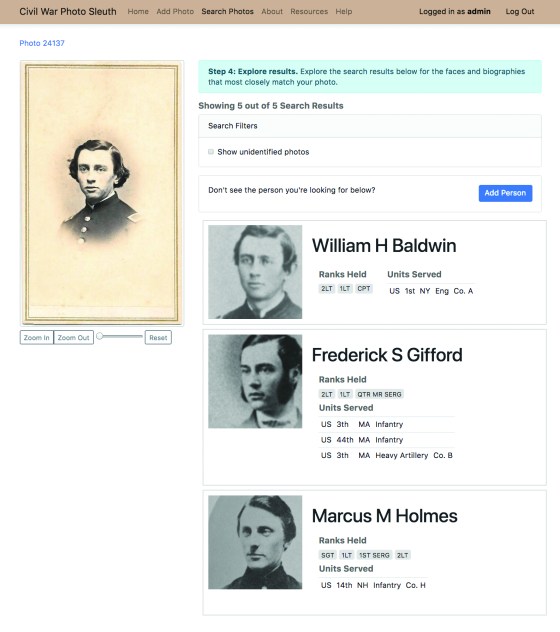
The system isn’t perfect: Identifications suggested by the site might be simply the best guesses of another uploader, and it’s unclear if every user has done follow-up research to confirm the identifications. But based on a study on one month’s activity, conducted by Luther and his team, the accuracy rate is estimated between 75% and 80%.
And collectors have a reason to want to expand the database, beyond mere curiosity, as identified photos sell better. “The image increases in value 50%,” says Tom Liljenquist, who collects for his family’s collection of more than 2,500 portraits.
Luther’s motives are also altruistic. The people behind the site hope that in identifying Civil War photos, they will also turn up new ways of telling this history — including, Coddington says, ways this technology can be applied to stories and photos of women and people of color, as the Civil War story is often told from the perspective of white Union soldiers.
“We went to war and it was devastating, and I can’t help but think that, if we were able to get exposed to these stories of the toll, the price that we paid for it,” Coddington says, “we might think differently about how we resolve our differences.”
Fox News Breaking News Alert
McConnell tears into Pelosi on impeachment
12/19/19 6:59 AM
Fox News Breaking News Alert
Rep. Mark Meadows (R-N.C.) announces that he will not run again for Congress at the end of his term
12/19/19 3:50 AM
Wednesday, 18 December 2019
Fox News Breaking News Alert
House votes to impeach President Trump for abuse of power, obstruction fo Congress
12/18/19 5:56 PM
Fox News Breaking News Alert
Federal appeals court rules ObamaCare individual mandate unconstitutional
12/18/19 3:16 PM
Fox News Breaking News Alert
Judge sentences rapper Tekashi 6ix9ine to 2 years in racketeering case, citing his cooperation with prosecutors
12/18/19 9:54 AM
Fox News Breaking News Alert
New York judge tosses state fraud charges against Paul Manafort
12/18/19 8:00 AM
Fox News Breaking News Alert
FOLLOW LIVE: House begins day-long debate in run-up to historic impeachment vote
12/18/19 6:03 AM
Tuesday, 17 December 2019
Fox News Breaking News Alert
House Rules Committee adopts rule for historic impeachment proceedings, after contentious marathon session
12/17/19 6:19 PM
Fox News Breaking News Alert
FISA court slams FBI over surveillance applications, in rare public order
12/17/19 12:48 PM
Fox News Breaking News Alert
Trump tells Pelosi in blistering letter that Dems have 'cheapened the importance' of impeachment
12/17/19 11:35 AM
Fox News Breaking News Alert
Ex-Trump campaign official Rick Gates sentenced to 45 days in jail, 3 years of probation for false statements and conspiracy in
12/17/19 9:02 AM
Fox News Breaking News Alert
Senate GOP Leader McConnell rejects Democratic Leader Schumer’s proposal for Trump impeachment trial, calls it ‘fishing expediti
12/17/19 7:44 AM
Fox News Breaking News Alert
Supreme Court Justice Neil Gorsuch, in ‘Fox & Friends’ interview, says judges must be ‘faithful to the original meaning of the C
12/17/19 6:15 AM
Fox News Breaking News Alert
Pervez Musharraf, former president of Pakistan, sentenced to death for treason
12/17/19 12:59 AM
Monday, 16 December 2019
Fox News Breaking News Alert
Multiple deaths reported as severe storms, apparent tornadoes tear across southeastern US
12/16/19 6:10 PM
Fox News Breaking News Alert
Nadler calls for Trump's removal in committee's 658-page report on articles of impeachment
12/15/19 11:20 PM
Sunday, 15 December 2019
Fox News Breaking News Alert
‘I was wrong’: Comey admits error in FBI’s FISA process
12/15/19 6:25 AM
Fox News Breaking News Alert
Fox News Poll: Trump job approval ticks up; views on impeachment steady
12/15/19 5:56 AM
Saturday, 14 December 2019
Fox News Breaking News Alert
LSU quarterback Joe Burrow awarded 2019 Heisman Trophy
12/14/19 5:57 PM
Friday, 13 December 2019
New story in Technology from Time: The 10 Best Gadgets of the 2010s
Making a list of the decade’s most important and influential gadgets is, in a word, illuminating — and that’s before you factor in all the LEDs. Over the last 10 years, thousands of products have been released, and while some are definitely “cooler” than others, their impact on the past decade, and the decade to come, is by no means identical.
Each gadget tells the story of a new way of thinking, a slow-moving paradigm shift set to change the way we approach the personal technology we interact with on a daily basis. Sure, you might not know what a Raspberry Pi is, but its impact on industries like robotics and home automation has been massive. Unfamiliar with the Adaptive Controller? That’s OK! But the elegantly executed idea has opened up a world of delight for gamers with disabilities. Think drones are just for shooting vacation footage? Think again — and watch your head.
Technology exists to augment the human condition, to make people smarter, better, and ultimately, more human. From smartphones and drones to consoles and cars, the past decade has more than enough life-changing devices to choose from. Here are TIME’s picks for the most important gadgets of the decade.
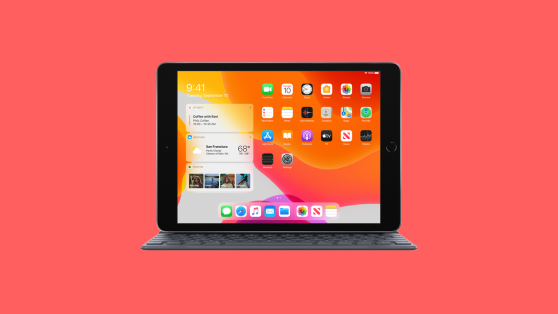
Apple iPad (2010)
Before the iPad’s introduction in 2010, the idea of a “tablet computer” was mostly relegated to slick science fiction movies and unwieldy laptop-adjacent monstrosities running terrible software. Apple’s iPad — like the iPhone before it — resulted in a cultural shift for personal computing, and set the tone for the next decade of portable devices. Its impressive multitouch display, complete abandonment of physical keys, and gargantuan selection of software and media created a perfect storm of entertainment that everyone could get on board with. And while competitors have had ample time to make laptops or detachable two-in-one computers to attack the iPad’s biggest pain points, Apple has continuously advanced the platform’s iPadOS and hardware (Apple Pencil, anyone?), making any nerd optimistic about the next decade of tablet computing.

Tesla Model S (2012)
Think cars can’t be gadgets? Then you haven’t driven a Tesla Model S — or watched one drive up to you. The electric sedan has slowly reshaped the trajectory of the automotive industry, forcing competitors to embrace a battery-powered future instead of the gas-guzzling present, and challenging the belief that electric cars can’t be cool. Features like downloadable software updates, a huge touchscreen display and advanced autopilot capabilities make it feel like a vehicle from 2022 instead of 2012. Think of the Tesla Model S as the iPod of cars — if your iPod could do zero to 60 in 2.3 seconds.
Raspberry Pi (2012)
At first glance, the Raspberry Pi looks more like a component that fell off the space station. But take a closer look at the miniature Linux computer, originally made for promoting coding in schools, and you’ll find a wide-ranging community in love with the blank slate it provides. To get started you’ll need a keyboard, mouse, and monitor. But once you’re plugged in, the possibilities are endless. Since its debut, a vibrant DIY ecosystem has sprung up around the Raspberry Pi, making it the go-to gadget for tinkerers, engineers, and that one relative you always call whenever your Wi-Fi is on the fritz. Sure, you can use it to learn to code, but it’s got the range to handle everything from robotics and home automation to entertainment. Makers and accessory manufacturers have turned the tiny boxes into everything your budding engineer brain can think of: weather stations, retro game consoles, smart speakers, cloud servers, the whole nine yards. After seven years on the market, and with over 25 million units sold, the Raspberry Pi is a tinkerer’s dream come true.

Google Chromecast (2013)
Google’s Chromecast, released in 2013, made it dead simple to beam media from your laptop or smartphone to your TV, helping popularize the very concept of streaming. It bridged the gap for people who wanted a piece of the future without investing in a pricey smart TV, or spending over a hundred bucks on some expensive and gaudy streaming box. At $35, Chromecast democratized streaming while giving users an integral piece of smart home connectivity for cheap. Now, the platform is capable of streaming more than media; Google’s added support for its game-streaming Stadia service to its more powerful Chromecast Ultra devices. It might not be an essential piece of technology in the decade to come, but the Chromecast’s influence on streaming media can’t be understated.

DJI Phantom (2013)
While you might hear a drone before you see it, chances are you’ll be pleasantly surprised by what it sees, and how cool the view is a few hundred feet in the air. And of all the footage-capturing drones around, DJI’s Phantom is the most recognizable — and the most popular drone on YouTube. Its signature all-white design makes it hard to miss, and the company’s dedication to making drone piloting as simple as possible has made the Phantom an easy choice for beginning pilots, and a satisfying tool for aerial photography. And this is only the beginning. There’s already a professional drone racing league, and with companies betting on drones to handle everything from shipping goods to construction to surveillance, you’re bound to interact with more than a few in the decade to come.
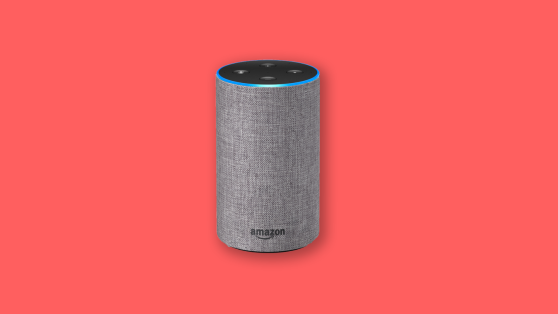
Amazon Echo (2014)
Talking to yourself is still a little odd, but talking to your voice assistant has become a common activity in homes worldwide thanks to Amazon’s Alexa, the voice assistant built into its Echo devices and other smart home gadgets. Voice assistants are the new kid on the block, ideal for managing your smart home devices, handling media playback or quickly communicating with friends and family. Amazon’s Echo smart speaker and Alexa voice assistant is one of the most popular, with over 100 million Alexa-enabled devices sold as of 2019. As the first of its kind, Alexa blazed a trail for the multiple competitors trying to sell you on their own voice assistants to varying degrees of success. While convenient, though, the proliferation of devices like the Echo has spurred controversy surrounding the data collection practices of smart device manufacturers, becoming one of the most high-profile privacy issues of our time.
Apple Watch (2015)
While many have tried, no one has been able to match the polish and performance of the Apple Watch, which set the standard for what a smartwatch could do. Since its introduction in 2015, it’s gone from a device for early adopters and fashion-deficient nerds to a mainstream accessory, thanks to its smart software and ever-improving hardware. And as the Apple Watch expands its health-oriented features, it could become the easiest way to keep your health on track and your day on schedule.
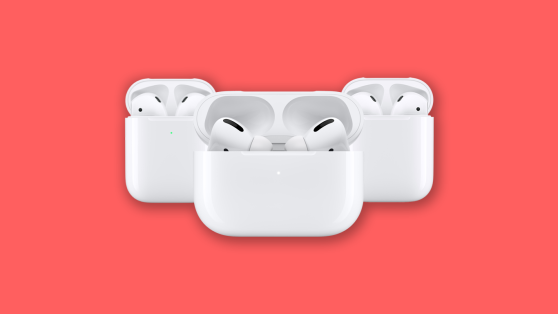
Apple AirPods (2016)
Like the iconic iPod before it, Apple’s AirPods have captured the hearts, minds and ears of music lovers looking to jam to some tunes. First released in 2016, AirPods quickly became an icon in their own right, both for their aesthetic appeal as well as their larger cultural impact. But widespread adoption hasn’t come without criticism. Its controversial manufacturing methods make disposal and recycling difficult, and could alter how we think about the future of our gadgets once we’re done with them. AirPods even carry social significance thanks to the glut classist jokes and memes spread across social media, transforming them into earbuds that double as a not-so-subtle status indicator. However, their cutting-edge hardware and software evolved further in this year’s AirPods Pro, and helped cement them as the gold standard of truly wireless audio for music fans.
Nintendo Switch (2017)
When it comes to gaming on the go, no one can top Nintendo’s track record, beginning with the humble Game Boy in 1989. But the introduction of its hybrid Nintendo Switch in 2017 — which you can play either portably or connected to your TV — might be the company’s most important contribution to gaming yet. Compared to the competition, it handily takes the crown as the most important video game console of the decade, with fans begging developers to bring their next title to the Switch. Its smartphone-inspired portability, paired with Nintendo’s ever-growing library of blockbuster, independent and vintage titles, makes the Switch feel like the culmination of Nintendo’s idea of what gaming should be.
Xbox Adaptive Controller (2018)
Microsoft’s Xbox Adaptive Controller, made for gamers with limited mobility and highly modifiable for different users’ needs, is perhaps my favorite gadget of the decade, and one I pray is duplicated by other major game companies. Not only does it look slick, it’s designed to accommodate a subset of gamers long ignored by the larger gaming industry. Microsoft worked alongside organizations like the Cerebral Palsy Foundation and the AbleGamers Charity to shape everything from the huge buttons on its face to its accessible packaging. With over a dozen ports for connecting assistive controllers, buttons and joysticks, and its compatibility with both Xbox One consoles and Windows PCs, Xbox’s Adaptive Controller is one of the most important developments in the gaming industry, and should put a smile on anyone’s face.
Fox News Breaking News Alert
Supreme Court says it will hear White House challenge to congressional, state subpoenas for Trump financial records
12/13/19 1:45 PM
Fox News Breaking News Alert
Plant, schools on lockdown after gunman shoots employee
12/13/19 7:17 AM
Fox News Breaking News Alert
House Judiciary Committee approves two articles of impeachment against Trump, after dramatic three-day session
12/13/19 7:12 AM
Fox News Breaking News Alert
Actor Danny Aiello, star of 'Moonstruck,' 'Godfather II,' 'Do the Right Thing,' dead at 86
12/13/19 7:07 AM
Fox News Breaking News Alert
NYPD has arrested a 13-year-old suspect in shocking murder of Barnard College student, according to reports
12/13/19 6:31 AM
Thursday, 12 December 2019
Fox News Breaking News Alert
Trump congratulates UK's Johnson after historic wins, hints at new trade deal
12/12/19 11:09 PM
Fox News Breaking News Alert
Republicans erupt as Nadler suddenly postpones impeachment vote near midnight
12/12/19 8:43 PM
Fox News Breaking News Alert
David Stern, former NBA commissioner, undergoes emergency surgery after brain hemorrhage
12/12/19 8:04 PM
Fox News Breaking News Alert
House Dems, GOP stretch impeachment session into the night sparring over Trump
12/12/19 6:34 PM
New story in Technology from Time: Ring Recommends Users Update Their Home Security System Passwords After String of Hacking Incidents
Ring security products are facing criticism after multiple reports that the brand’s in-home security cameras have been hacked, including an incident where an 8-year-old Mississippi girl heard voices coming from the device in her bedroom.
In the security footage, a man’s voice is heard, telling the little girl that he’s “Santa Claus,” and her “best friend.” He also encourages the child to mess up her room and break her TV.
“They could have watched them sleeping, changing. I mean they could have seen all kinds of things,” the girl’s mother, Ashley LeMay, told WMC Action News. “It makes me feel like it’s either somebody who knows us or somebody who is very close by.”
Each time I've watched this video it's given me chills.
A Desoto County mother shared this Ring video with me. Four days after the camera was installed in her daughters' room she says someone hacked the camera & began talking to her 8-year-old daughter.
More at 6 on #WMC5 pic.twitter.com/77xCekCnB0
— Jessica Holley (@Jessica_Holley) December 10, 2019
Other incidents have been reported in Florida, Texas and Georgia. In Cape Coral, Fla., for example, a hacker gained access into a couple’s Ring camera and made racist comments about their son.
In a statement sent to TIME, Ring said that they take their devices’ security very seriously, but that the incidents are not related to a breach of security protocols.
“We have no evidence of an unauthorized intrusion or compromise of Ring’s systems or network,” the statement reads.
The statement adds that Ring is aware of an incident where “malicious actors” were able to obtain a user’s login credentials from an outside, non-Ring device and use that same information to log into the Ring device. “Upon learning of the incident, we took appropriate actions to promptly block bad actors from known affected Ring accounts and affected users have been contacted,” Ring says.
Craig Shue, an associate professor of computer science at Worcester Polytechnic Institute, agrees that the hackers are likely getting Rings users’ account information from third parties (like the details used for an email account or streaming service). Using specialized software, they are then able to recycle those passwords and usernames across multiple devices, including Rings, looking for instances where the login data matches. Motherboard has reported of forums and Discord servers whose users collaborate on such hacking projects.
Shue recommends that users create strong passwords, ensure each is unique across their different accounts and devices, and change them regularly. He also recommends enabling two-step authentication on devices where possible; this adds another step to the authorization process by sending a security code to a registered email or phone number when someone tries to log into an account.
Ring also recommends customers change their passwords and enable two-factor authentication. LeMay told WMC that she did not set up the two-factor authentication for her Ring account. She has since disabled the device and plans on returning it.
Shue says that both Ring and its products’ users bear responsibility for their security. “Manufacturers have the responsibility to clean out devices that can be secured and patch any vulnerabilities that come up,” he tells TIME. “Consumers also have to look out for their own self-interest. It hurts us if it doesn’t go well… we have to always be vigilant.”
“I would also encourage everybody to do their own form of risk assessment and determine what they need in these devices and whether it’s worth the risk to have that functionality,” Shue continues. “It’s kind of crazy that we use passwords as a line of defense for a sensitive device.”
Wednesday, 11 December 2019
New story in Technology from Time: Activists and LGBTQ Groups Say These Facebook Ads Spread Dangerous Misinformation About HIV Drugs
Advocacy groups are urging Facebook to remove advertisements that they say unfairly infer that the HIV/AIDS prevention Truvada PrEP (pre-exposure prophylaxis) is dangerous, an allegation they say could endanger the people who are most at risk of contracting the disease.
More than 50 HIV/AIDs, LGBTQ and public health advocacy groups released a letter on Monday asking Facebook and Instagram to remove the ads from their platforms.
The ads referred specifically to “Truvada PrEP” (the brand name for one of the medications, dtenofovir disoproxil fumarate, used as PrEP) and in some cases more generically to “PrEP.” There is another PrEPdrug, Descovy (tenofovir alafenamide), which was approved in 2019.
Common side effects for Truvada include stomachaches, headaches and weight loss in some patients, according to Gilead, the biotechnology company that makes both drugs. Descovy has similar side effects, although adverse reactions may be somewhat less likely, Gilead claims. For HIV negative people, PrEP can reduce the risk of infection during sex by 99% when used daily, according to the U.S. Centers for Disease Control and Prevention (CDC).
In their letter, advocates say that law firms have been targeting the ads toward members of the LGBTQ community, seeking clients who have had more serious side effects from Truvada PrEP, such as damage to their kidneys and loss of bone density. The letter argues that the ads have caused “significant harm to public health” by sowing concerns about the safety of the drug in the LGBTQ community, even though the drug is considered a safe and effective means of reducing the risk of infection.
Kidney issues and bone density issues are also “known possible risks” of Truvada, says Dr. Joyce Jones, assistant professor of medicine at Johns Hopkins University School of Medicine. However, Jones adds, “if [patients] are otherwise healthy, and otherwise don’t have a preexisting problem that would increase their risk for a kidney or bone issue, the risk is relatively low. It’s still something that we need to monitor, but in general people do quite well on Truvada,” says Jones. (She also notes that the newer drug, Descovy, has a lower risk of bone density and kidney issues.)
“By allowing these advertisements to persist on their platforms, Facebook and Instagram are convincing at-risk individuals to avoid PrEP, invariably leading to avoidable HIV infections,” the letter says.
Broadly, doctors say more people who are at risk for contracting HIV should be on a PrEP regime. The CDC warned earlier this year that efforts to combat HIV have “stalled” as the disease continues to infect 39,000 people in the U.S. each year; the agency announced in February that encouraging the use of PrEP was part of its strategy to curb the disease’s spread.
“Unnecessarily scaring people from PrEP [is] taking away from these efforts to end the HIV epidemic in the U.S,” says Jones. “PrEP is not being accessed in the way that it should.”
Rich Ferraro, the chief communications officer for national LGBTQ advocacy group GLAAD, says that he has been corresponding with Facebook for a few months, urging the social media giant to remove the ads to no avail. His concern is that the ads are reaching men limited access to information about HIV/AIDS and prevention. “Oftentimes, LGBTQ people are not able to or are not comfortable asking their doctors about HIV/AIDS, so they go online for information. And they’re finding these ads directly on their Facebook feeds,” says Ferraro.
Peter Staley, an HIV/AIDS activist and a cofounder of PrEP4All, describes PrEP as like a “miracle drug;” an essential tool for preventing infections. He fears that the ads are eroding years of public health advocates’ work to encourage the use of Truvada since the drug was approved by the U.S. Food and Drug Administration in 2012.
“This is what we fought for,” says Staley. “And to have a corporate behemoth ignore us and dismiss our concerns reminds me of the walls of intransigence that we hit in the 1980s from the U.S. government and the mainstream press. They just didn’t care that the disease was spreading. And they’re hiding behind obscure advertising policies and third party institutions that really know nothing about the complexities of HIV treatment.”
Ferraro argues that the ads are a clear violation of Facebook’s ad policy, which prohibits “deceptive, false, or misleading claims” about health products. Advocates say Facebook should treat these PrEP lawsuit solicitations the same way it has treated false claims that vaccines are dangerous: by listening to healthcare experts and taking them down.
However, Facebook argues that, by its standards, the PrEP ads are not in the same category as the anti-vaccine ads. “We value our work with LGBTQ groups and constantly seek their input. While these ads do not violate our ad policies nor have they been rated false by third-party fact-checkers, we’re always examining ways to improve and help these key groups better understand how we apply our policies,” a Facebook spokesperson said in a statement.
Jones believes that Facebook has a responsibility to make sure that it’s not permitting ads don’t cause unnecessary “fear-mongering,” she says. “In this new age of social media, having accurate information is the responsibility of these platforms.”
New story in Technology from Time: ‘Fully Loaded,’ Apple’s New Desktop Mac Pro Costs Over $52,000 — and Don’t Forget the $400 Wheels
(Bloomberg) — Apple Inc. started selling its new Mac Pro desktop computer on Tuesday, complete with eye-watering pricing options that can push the cost north of $50,000.
The new machine, built in Austin, Texas after Apple got tariff relief from the Trump administration, starts at $5,999 for specifications that some programmers, video editors, and photographers might consider measly. Fully loaded, the computer costs more than $52,000 — and that’s excluding the optional $400 wheels for easily moving the machine around an office.
For some professional users, the cost of Apple’s new computer is just part of doing business. But for most consumers, the Mac Pro’s price is shocking. As one of the most expensive personal computers in the world, some Apple users quickly compared the cost to a car.
I’m loving all these Mac Pro configurations that cost more than a luxury car or a significant portion of a mortgage.
I mean, seriously?
— Glenn White (@justicar) December 10, 2019
The base product includes 256 gigabytes of storage, low for professional computers in the same price range. A 4 terabyte option is an extra $1,400. An 8 terabyte upgrade is coming later, according to Apple’s website, but pricing hasn’t been announced.
To increase the computer’s RAM memory from 32 gigabytes to 1.5 terabytes is $25,000 extra, the main reason the price can exceed $52,000. Apple said a version of the Mac Pro designed to be racked in data centers costs an extra $500 and will launch later. The Mac Pro does not include a display.
Apple put a new Pro Display XDR on sale Tuesday for $4,999.
The Mac Pro’s pricing first came into focus in June when the company announced the product and said that a stand to hold the new monitor would cost an extra $999.
The company also said on Tuesday that it is doubling the cash-back offer for the Apple Card on Apple hardware purchases to 6% until the end of the year. That could make such purchases just a little easier.
If you use the Apple Card to get 6% back though, you can buy a nice $3000 MacBook Pro or iMac.
— Bryan Rapp (@BryanRapp) December 10, 2019

